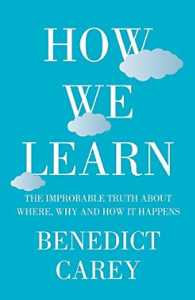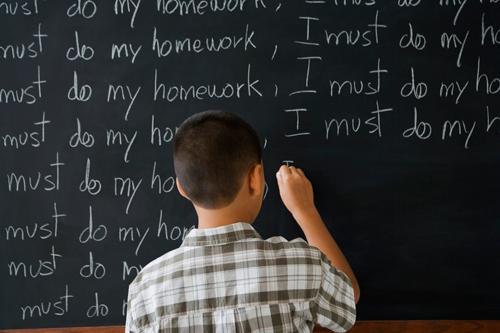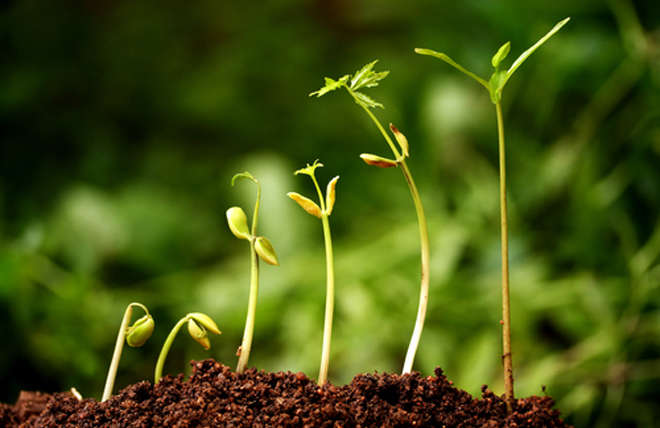 Must all learning be difficult, a series of miserably rote chores performed by schoolchildren trapped at their desks? Or can mastering multiplication, reading, science, and writing be a romp through the playgrounds of the mind? While most students would prefer that school be as easy as possible, the truth is that the deepest human understanding—the stuff that sticks with us and moves us forward emotionally and intellectually—requires real challenge. The trick of education, then, is helping the learner to work within the sweet spot between frustration and drifting.
Must all learning be difficult, a series of miserably rote chores performed by schoolchildren trapped at their desks? Or can mastering multiplication, reading, science, and writing be a romp through the playgrounds of the mind? While most students would prefer that school be as easy as possible, the truth is that the deepest human understanding—the stuff that sticks with us and moves us forward emotionally and intellectually—requires real challenge. The trick of education, then, is helping the learner to work within the sweet spot between frustration and drifting.
Benedict Carey’s new book, How We Learn: The Surprising Truth About When, Where, and Why It Happens (Random House), points out just how little we understand about getting to this sweet spot. A brain and behavioral science writer for the New York Times, Carey explores a century’s worth of thinking about thinking to point out just how many common ideas about education are wrong or misguided. Because he is a journalist and novelist, Carey’s writing is engaging and deeply readable—full of anecdotes, examples, and irony. His prose invites us to engage, to think, and therefore to learn.
 His central conceit is that learning does not have to be drudgery—in fact, should not be drudgery. When we drill too long on one skill, or drive ourselves without breaks or variation in our thinking, we actually absorb less than when we take advantage of the ways our brains have evolved to work most effectively. While most of us believe, at least on some level, that only discipline and repeated practice yield results, Carey points to studies that demonstrate how well-timed breaks, useful distractions, sleep, and forgetting are all essential parts of the process. This is a deeply appealing message to any of us who have ever goofed off, taken a long lunch, or watched bad TV instead of reading an edifying novel. Neuroscience explains why all work and no play makes Jack such a dull boy—and Carey explains the science to us.
His central conceit is that learning does not have to be drudgery—in fact, should not be drudgery. When we drill too long on one skill, or drive ourselves without breaks or variation in our thinking, we actually absorb less than when we take advantage of the ways our brains have evolved to work most effectively. While most of us believe, at least on some level, that only discipline and repeated practice yield results, Carey points to studies that demonstrate how well-timed breaks, useful distractions, sleep, and forgetting are all essential parts of the process. This is a deeply appealing message to any of us who have ever goofed off, taken a long lunch, or watched bad TV instead of reading an edifying novel. Neuroscience explains why all work and no play makes Jack such a dull boy—and Carey explains the science to us.
Carey also unpacks the science of motivation, and describes how we can induce ourselves to stay motivated through the challenging tasks real intellectual growth requires. Motivation is essential, whether it comes from behaviorist carrot-and-stick external rewards, or from one’s own internal sense of mission. Carey describes a study—performed in Berlin in the 1920’s—demonstrating that humans are most able to remember tasks that are unfinished. Setting our own goals and choosing our own work fuel us, and this quality of the human mind—the desire to complete a job once it has been started—is the reason why. Once a task has the “psychological weight of a goal, even if it’s meaningless,” we are more likely to feel inspired to complete it. To get our minds working, Carey suggests, we should judiciously choose what to leave undone.
Carey is fascinated by both behavioral science and neuroscience—and because of his writing, so are we. In order to seek evidence for chapters like “The Hidden Value of Ignorance” or “You Snooze, You Win,” he reaches into an entire century of research. For example, he describes a way in which we can help ourselves be more creative using a process first articulated by Graham Wallace in the 1920s. This process might be new to us, but it’s almost 100 years old. The first step—no surprise to teachers and learners everywhere—is the hard work of practice, right up to the point where we feel frustrated and “stuck.” Only then are we ready for the daydreaming and mental wandering of the next step, “incubation.” But this apparently unfocused stage is crucial. Without some relaxed time to chew on an idea, we won’t get to the “aha” stage of illumination, when our creativity has results. The final step? Again, more work, as we verify our own production. This predictable four-step process—practice, incubate, illuminate, verify—is a perfect example of Carey’s central point that we learn best when we vary our approaches and activities—both working and woolgathering have their roles to play.
Being effortlessly right all the time should not be our goal, because being wrong, and then quickly correcting our misunderstandings, deepens learning.
As Carey points out, being effortlessly right all the time should not be our goal, because being wrong, and then quickly correcting our misunderstandings, deepens learning. Want to get better at a distinct skill more quickly? Practice just that skill. But the better route to gaining skills or understanding is the path of greater resistance and apparently slower progress—practicing related skills in sequence. The technical term for this is “interleaving,” and it works in part by making our brains work harder.
As I read, I found that Carey was most likely to stress the importance of ease in the learning process, and to downplay focused effort. He was a driven student who later became a more playful one, and so he is drawn to those kinds of examples. However, I found learning easy when I was young, and now I often have to trick myself to work harder on things if I’m to do my best work. As I read, I wrote in the margins, as though in dialogue with Carey: “Yes, but the harder our brains have to work, the greater the increase in in what we know!” I also found myself wanting more information and evidence for some of his claims, particularly about topics like perceptual learning, which he discusses in his temptingly-titled chapter “Learning Without Thinking.” However, Carey proved some of his points when he left me wanting more, as his book inspired me to do some of my own research and hard thinking. I spent the week after I read his book on Twitter and online following up on leads he introduced.
And this is appropriate, because our understanding of education is hardly settled business; we are only at the beginning of developing an understanding of how to use what we are beginning to learn through neuroscience. Educators tend to disagree as much as they agree on how we can best apply over a century of research into optimal learning conditions. How We Learn is a great choice for anyone curious about how our brains work best, and eager to understand how we can apply those lessons in unconventional ways. Carey’s collection of quirky ideas, surprising insights, and fascinating stories will both rewire and inspire.




3 Comments
Tara Green
Excellent insights, Launa!